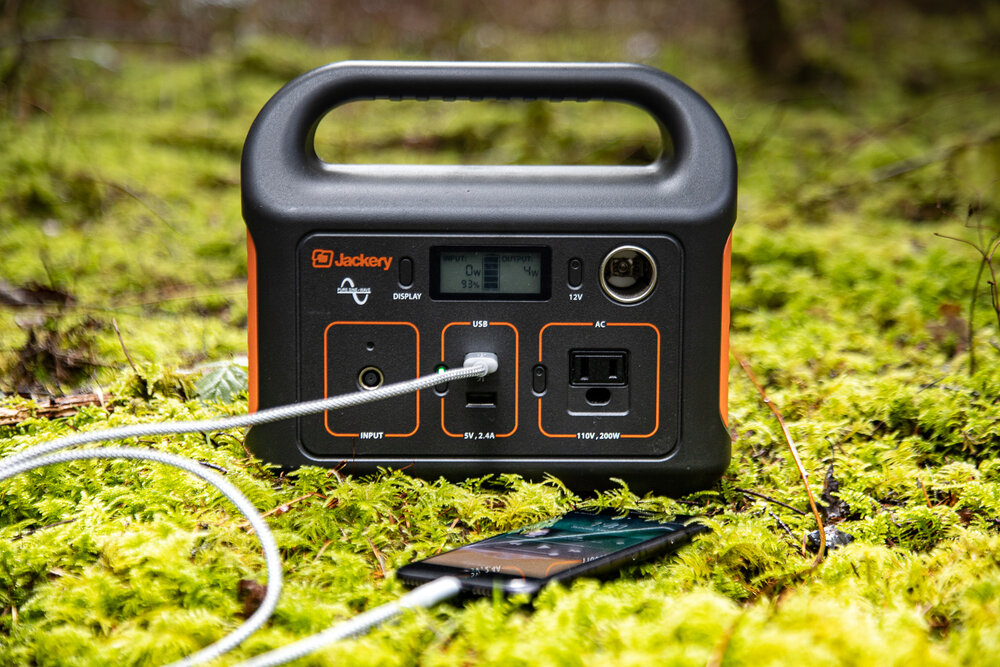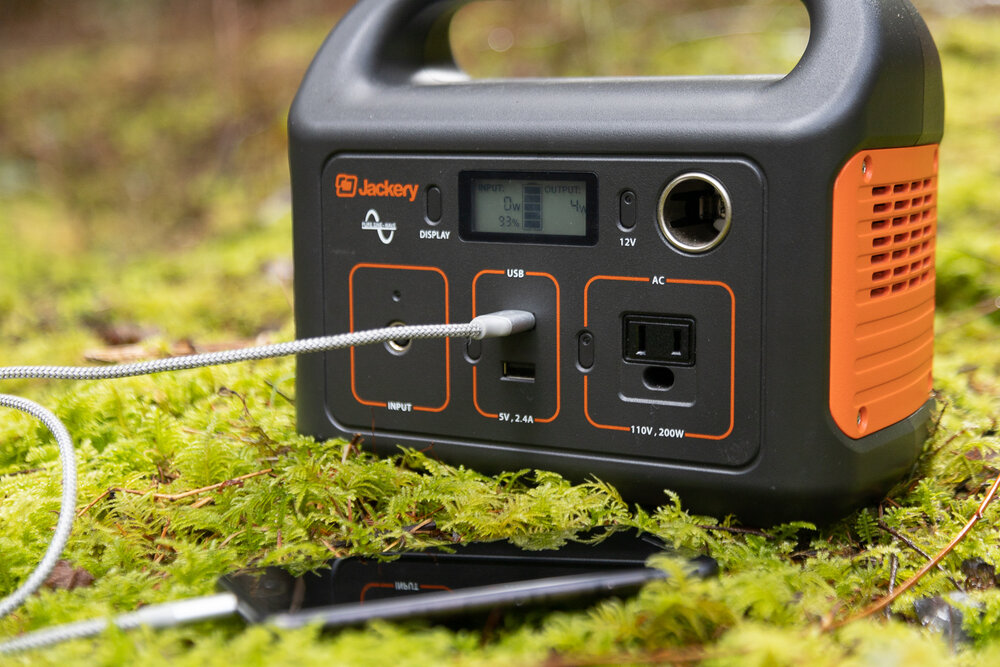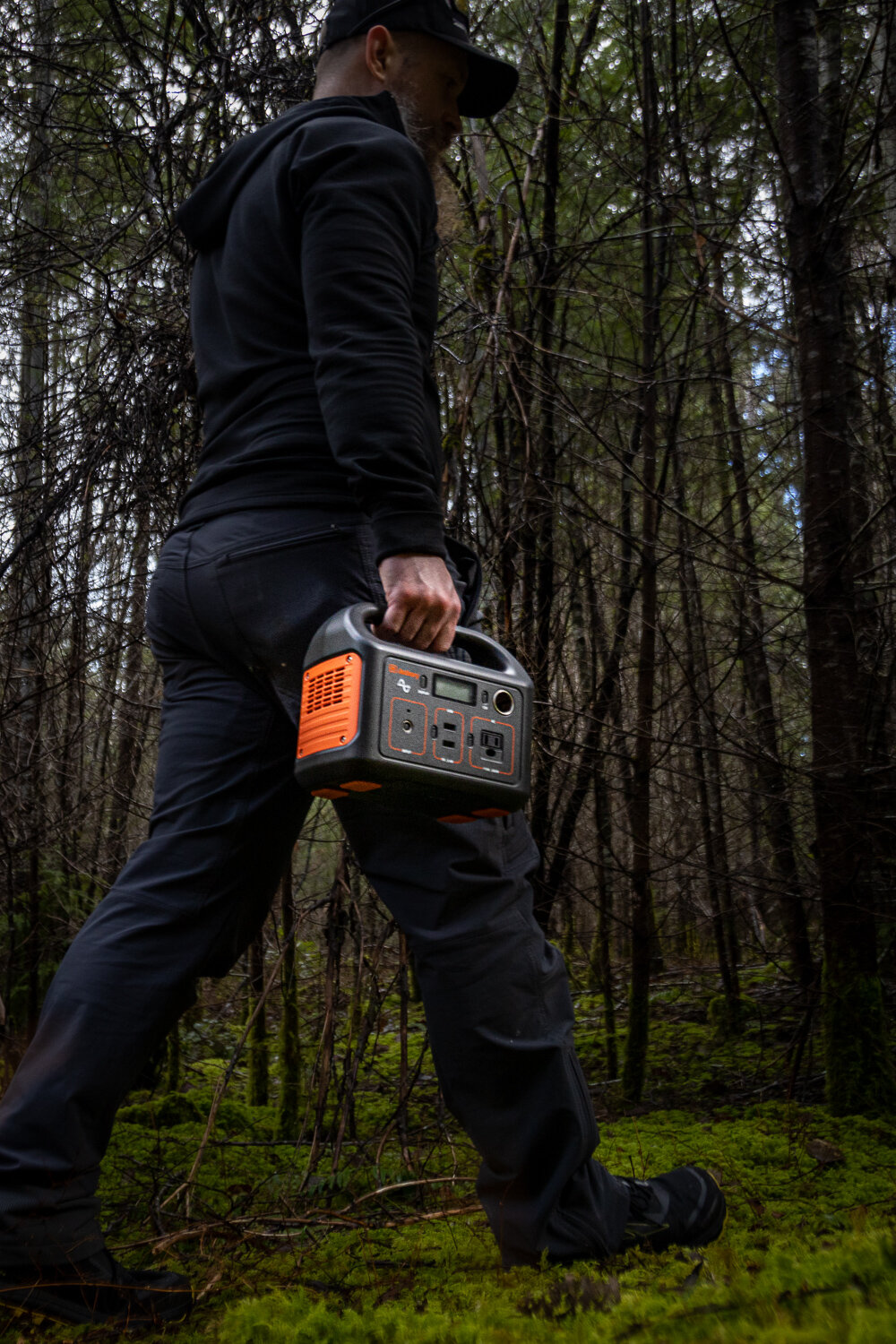The Jackery Explorer 240 is a small and light portable power station.
This is not a tiny battery pack that fits in your pocket and charges your phone once. This is a bigger power station that you can take with you on road trips, camping or have for emergencies at home that can charge your phone more than 20 times.
This Jackery Explorer 240 review will cover the specs of the battery pack, how many charges you can get from it, it’s pros and cons and whether you should buy it.
Specs
- 240 watt hour battery lithium-ion battery pack
- 1 AC outlet, 200W (400W peak)
- 2 USB-A ports
- 1 DC car port with pure sine wave converter
- Wall charger
- Smooth solid handle
- Built-in MPPT controller
- Battery Management System has Over Voltage Protection and Short Circuit Protection
- 3.1 kilograms (6.6 pounds)
- Charges up completely in 6.5-7 hours.
- $259.99 CAD, $199.99 USD
- 160, 240, 500, 300 and 1000 available.
Charges

Most small phone USB batteries might be 3000, 5000 or 7000 mAh and charge your phone a couple times.
An iPhone 8 has a 1821 mAh battery. When it’s completely dead and is turned off it will require 1821 mAh to charge up to full.
If it’s running then it’s using battery at the same time you charge it, usually at a slower rate.
It’s got a lot of juice to charge.
- iPhone 8: 24 charges
- 40w Electric blanket for 10 hours
- 13 inch laptop 3.5 times.
- 60W TV for 3 hours
The Explorer 240 has a 240 watt hour battery which is equivalent to about 64000 mAh. That’s a few more charges than your average pocket or purse battery.
Pros
The Explorer 240 has a lot going for it:
- Small
- Lightweight
- Powerful
- Easy to use
- Comes with car charger
- Solid handle to pick up and go

The 240 is very easy to use. Plug it it in when you need a charge from the included wall charger. Then plug in your stuff to the AC or USB outlets when you need a charge.
I do forget to the turn the outlets on sometimes and then nothing charges. But with USB cords being as flakey as they are these days, I usually wait to see if my phone or camera is actually charging before leaving. Cords can break or sometimes just don’t charge until you unplug them and plug them back in.
I don’t have any solar panels at the moment to test with (and it’s the middle of winter) but Jackery’s solar panels just plug into the input so that’d be easy to do as well.
Cons
My only gripe is that it doesn’t have any USB-C ports. The Explorer 240 has been out for a few years now so I don’t fault Jackery for not including any but I’m certainly hoping the next iteration includes them. USB-C popularity has skyrocketed in the last few years and anything USB will likely use the connection.

USB-C not only is a more universal connection but can offer faster charge. Older USB cables can charge from 2.5 to 4.5 watts. USB-C (assuming both ends are compatible) can charge up to 100 watts. This is plenty for laptops and other bigger devices. USB-C has already powered Macbook laptops for the last few years.
I’m looking forward to this being added in the future.
Conclusion
Should you buy a Jackery Explorer 240 portable power station?
If you have any small electronics at home, go on road trips, living in the van, camping or want to prep for emergencies, you should have a smaller portable power station like this. Yes there are larger power stations that can power your house for days at a time, but they’re massive and hard to move around. At only 6.6 pounds the 240 is easy to pick up and take wherever you want in the house or campsite.
If you need something slightly larger, Jackery does have an Explorer 500 version that’s slightly larger with 500 watt hours of power.
The Jackery Explorer 240 won’t fit in your pocket. But it’s perfect for the basecamp-style situations at home, in the van or the campsite.